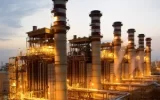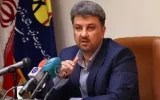
The spokesman for the Parliament's Energy Commission stated that industries have not fulfilled their obligations in supplying electricity, and said: "According to the law, industries must produce 10,000 megawatts of their own electricity by the end of 1404 (1425 AH), of which about two to three thousand megawatts have been produced so far."

The CEO of Jamco said: "The electricity economy in Iran is paralyzed; power plants are not even making ends meet for their repairs, let alone building new ones." He warned that incorrect electricity pricing has caused investors to flee the sector and that the electricity imbalance is deepening every year.

The CEO of the Greater Tehran Electricity Distribution Company said: "This summer, the capital experienced one of the most effective periods of transition from peak electricity consumption to date by implementing smart consumption management plans, equipping high-consumption subscribers with smart meters, and effective subscriber participation."

The Director General of the Electricity Network Engineering and Management said about the successful implementation of the 100 Nights, 100 Visits project aimed at reducing the effects of electricity waste in the country: "This project has so far resulted in savings of 600 megawatts in electricity consumption."

An official said: "It is expected that during peak periods, electricity consumption will reach more than 80,000 megawatts, but the electricity industry has made every effort to ensure that the need for electricity consumption does not exceed 75,000 megawatts."

Referring to the extensive plan to install 5-kilowatt home solar panels, a spokesman for the electricity industry announced the purchase of electricity from these generators at attractive rates from subscribers.

Referring to the design and implementation of 36 consumption management packages in the country's electricity industry, the Director General of Energy and Customer Affairs of the Electricity Industry said: "These packages have been developed and implemented with the aim of reducing electricity consumption, overcoming the summer peak load, and providing sustainable energy."

The Deputy Director of Distribution Coordination at Tavanir Company announced that 84 percent of the electricity industry's debts were collected during the first three months of this year.

The CEO of the Thermal Power Company announced a 4,000 megawatt increase in the electricity generation capacity of thermal power plants for this summer.

A spokesman for the electricity industry said: "Due to the premature heat, the growth in demand for electricity consumption has increased by about 13.6 percent."










